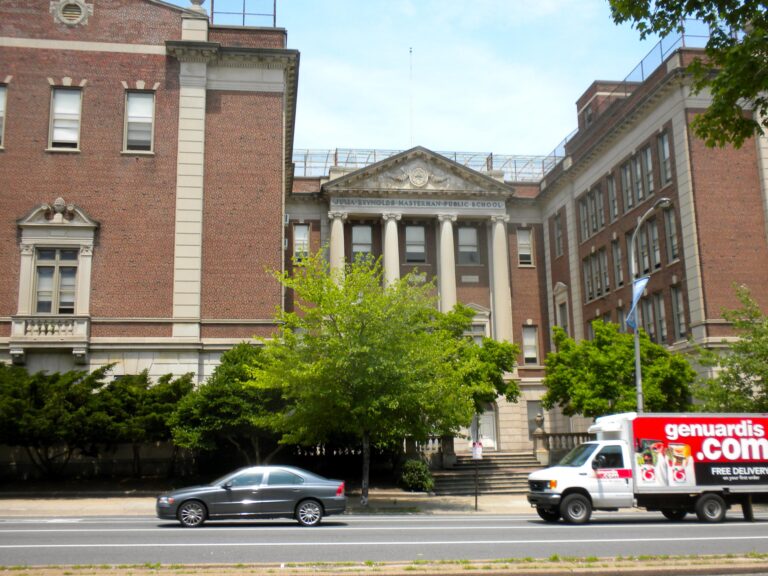Julia R. Masterman School: A Beacon of Academic Excellence in Philadelphia’s Public Education
Masterman’s National Prestige: Consistent Top-Tier Recognition
For the third year running, Philadelphia’s Julia R. Masterman School has earned a coveted position among the top 10 high schools nationwide, as ranked by the latest U.S. News & World Report. Renowned for its challenging curriculum and comprehensive student development programs, Masterman exemplifies academic distinction and holistic education. This prestigious ranking not only celebrates the remarkable achievements of its student body but also reflects the unwavering dedication of its educators and the strong support from the local community.
Core elements fueling Masterman’s elite standing include:
- Exceptional performance on Advanced Placement (AP) examinations
- Graduation rates significantly exceeding the national benchmark
- High college readiness scores across a diverse student population
- Robust STEM and humanities offerings designed for gifted and motivated learners
Below is a comparative overview of Masterman’s key performance indicators versus national averages:
| Performance Metric | Julia R. Masterman School | National Average |
|---|---|---|
| Graduation Rate | 99% | 85% |
| AP Exam Participation | 92% | 38% |
| College Readiness Index | 89/100 | 65/100 |
Driving Forces Behind Masterman’s Academic and Community Success
Masterman’s rise and sustained presence among the nation’s top high schools is a testament to its relentless pursuit of academic rigor and community engagement. The school cultivates an environment where students are challenged through advanced coursework, supported by a faculty known for their expertise and passion for teaching. This commitment is evident in the school’s superior AP exam pass rates, SAT scores, and college enrollment figures, which consistently outperform national averages.
Moreover, Masterman’s influence extends beyond academics, deeply embedding itself within Philadelphia’s community fabric. Students are encouraged to participate in service projects and local initiatives that nurture leadership qualities and social responsibility. Key community impact areas include:
- Collaborative partnerships with local organizations aimed at youth empowerment and neighborhood enhancement.
- Volunteerism programs that engage students in meaningful social causes.
- Cultural and educational events fostering inclusivity and open dialogue.
| Metric | Masterman | National Average |
|---|---|---|
| AP Exam Pass Rate | 92% | 58% |
| Graduation Rate | 99% | 85% |
| Average Volunteer Hours per Student | 40+ | 20 |
Innovative Programs and Educational Strategies Fueling Masterman’s Excellence
The foundation of Masterman’s outstanding performance lies in its rigorous academic offerings and a culture that prioritizes excellence. The school’s honors and Advanced Placement (AP) courses challenge students to master complex concepts across a broad spectrum of subjects. Complementing this academic rigor is a vibrant array of extracurricular activities, such as robotics teams, literary societies, and community outreach clubs, which nurture both intellectual curiosity and personal growth.
Masterman’s success is further amplified by strategic investments in professional development and student support services. Faculty members engage in continuous training to adopt innovative teaching techniques that cater to diverse learning preferences. Additionally, personalized mentorship and counseling programs provide students with tailored guidance, enhancing their academic and personal development. The following table highlights key initiatives contributing to Masterman’s distinction:
| Initiative | Focus Area | Outcome |
|---|---|---|
| AP & Honors Curriculum | Academic Challenge | Elevated college readiness |
| Teacher Professional Development | Instructional Excellence | Innovative and adaptive teaching |
| Extracurricular Programs | Student Enrichment | Leadership and collaboration skills |
| Mentorship & Counseling | Personalized Support | Improved academic and social outcomes |
Strategies for Emulating Masterman’s Success in Other High Schools
Schools aspiring to replicate Masterman’s achievements should focus on fostering a culture of academic rigor combined with comprehensive student support. Central to this approach is maintaining small class sizes that enable personalized instruction and nurturing relationships between students and teachers. Equally important is recruiting and retaining highly skilled educators who engage in ongoing professional development to stay abreast of best teaching practices.
Furthermore, cultivating a vibrant extracurricular landscape and strong community ties are essential components of Masterman’s model. Encouraging collaboration among students, families, and local organizations creates a supportive environment that extends learning beyond the classroom. Recommended strategies include:
- Implementing mentorship programs that connect students with alumni and industry professionals for guidance and inspiration.
- Offering diverse clubs and sports to promote well-rounded development and teamwork.
- Upgrading facilities to incorporate modern technology and flexible learning spaces that enhance instructional delivery.
| Component | Actionable Step | Anticipated Benefit |
|---|---|---|
| Small Class Sizes | Cap enrollment at 20 students per class | Enhanced individualized learning and engagement |
| Qualified Educators | Provide continuous training and incentives | Elevated teaching quality and student achievement |
| Community Engagement | Develop partnerships and host community events | Stronger support networks and enriched student experiences |
Final Thoughts: Masterman’s Enduring Legacy in Public Education
Julia R. Masterman School’s repeated recognition as a top 10 high school in the U.S. News & World Report rankings reaffirms its position as a leader in public education. The school’s steadfast commitment to academic rigor, exceptional faculty, and active community involvement sets a benchmark for excellence in Philadelphia and beyond. Masterman’s ongoing success story is a powerful example of how dedication, innovation, and collaboration can transform public schooling into a launchpad for student achievement and lifelong success.








